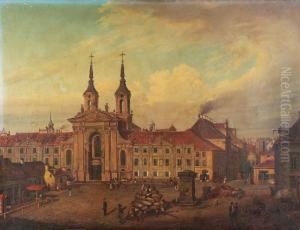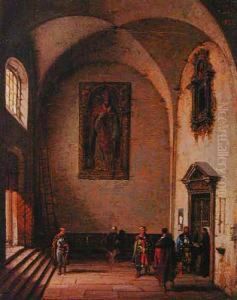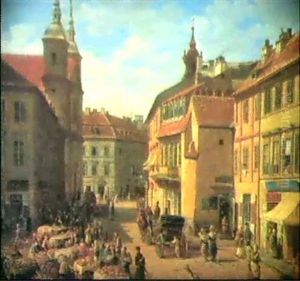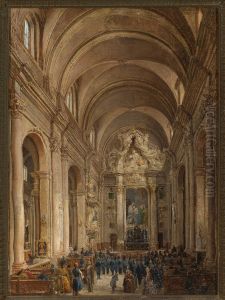Marcin Zaleski Paintings
Marcin Zaleski was a renowned Polish painter, born on September 19, 1796, in Kraków, Poland. Primarily known for his detailed and realistic cityscapes, Zaleski captured the essence of urban life in Poland during the 19th century. He is often regarded as one of the most important and influential Polish painters of his time, especially in the genre of cityscape painting.
Zaleski showed an early interest in the arts and began his formal training at the Warsaw School of Drawing. His education there laid the foundation for his artistic development, and he later continued his studies at the Warsaw University of Technology, where he honed his skills in architectural drawing. This background in architectural rendering greatly influenced his later works, which often featured precise depictions of buildings and city layouts.
Throughout his career, Zaleski remained deeply connected to his homeland. His works often depicted scenes from Warsaw and other Polish cities, capturing historical events, everyday life, and architectural landmarks with an extraordinary attention to detail. Zaleski's paintings serve as valuable historical documents that provide insight into urban Polish life in the 19th century. His ability to capture the atmosphere of a place made his paintings popular among both Polish nationals and international art collectors.
Zaleski was active during a period of great change in Poland, which at the time was under partitions by neighboring empires. Despite the political turmoil, he managed to find a sense of national pride in his work, contributing to the cultural identity of Poland through his art.
Marcin Zaleski died on September 16, 1877, in Warsaw. His legacy lives on through his paintings, which continue to be celebrated for their historical value and artistic merit. Zaleski's work is exhibited in various museums and galleries in Poland and across the world, preserving the memory of Polish cities as they once were and showcasing the talent of this remarkable cityscape artist.


















